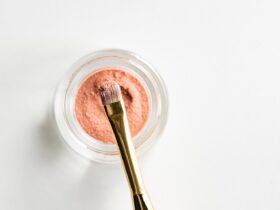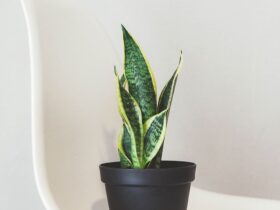For perfume enthusiasts, the thought of leaving your signature scent behind when traveling can be disheartening. Fortunately, TSA-approved perfume atomizers provide a convenient and compliant way to carry your favorite fragrances in your carry-on luggage. This article delves into the world of these handy travel companions, explaining the regulations, exploring the benefits, and offering guidance on selecting the perfect atomizer for your needs.
Understanding TSA Regulations for Liquids
The Transportation Security Administration (TSA) has strict regulations regarding the amount of liquids passengers can carry in their carry-on baggage. These rules are in place to ensure the safety and security of air travel. The core principle is the 3-1-1 rule:
- 3.4-ounce (100 milliliters) bottle or less: All liquids must be in travel-sized containers that are 3.4 ounces (100 milliliters) or smaller.
- 1 quart-sized, clear, plastic, zip-top bag: These bottles must be placed in a single, quart-sized, clear plastic, zip-top bag.
- 1 bag per passenger: Each passenger is limited to one such bag.
These rules apply to a wide range of liquids, aerosols, gels, creams, and pastes, including perfume. Violating these regulations can result in your items being confiscated at the security checkpoint.
The Allure of Perfume Atomizers
Perfume atomizers are small, refillable spray bottles designed to hold and dispense fragrances. They offer several advantages over carrying larger, full-sized perfume bottles:
- Compliance with TSA regulations: Most atomizers are designed to hold less than 3.4 ounces (100 milliliters), making them compliant with TSA’s liquid restrictions.
- Space-saving: Atomizers are significantly smaller and lighter than full-sized perfume bottles, freeing up valuable space and weight in your carry-on luggage.
- Protection against breakage: A small atomizer is less likely to break or leak than a larger, more delicate perfume bottle.
- Cost-effective: Instead of purchasing travel-sized versions of your favorite fragrances, you can simply decant a small amount into an atomizer.
- Variety: You can carry multiple atomizers, each filled with a different fragrance, allowing you to switch up your scent based on your mood or destination.
Types of TSA-Approved Perfume Atomizers
The market offers a diverse range of perfume atomizers, each with its own features and benefits. Here are some common types:
Traditional Screw-Top Atomizers
These atomizers feature a screw-top lid that seals the bottle. They are generally leak-proof and easy to fill. Look for models made from durable materials like glass or metal.
Pump-to-Fill Atomizers
These atomizers are filled by repeatedly pumping the nozzle while it’s attached to the spray nozzle of your original perfume bottle. They offer a clean and convenient filling process, minimizing the risk of spills and fragrance loss.
Bottom-Fill Atomizers
Similar to pump-to-fill atomizers, bottom-fill models are filled by attaching the atomizer to the nozzle of your perfume bottle and pressing down. They are often made with a clear window to easily monitor the fill level.
Twist-Up Atomizers
These atomizers feature a twisting mechanism that reveals the spray nozzle. This design helps protect the nozzle from damage and prevents accidental sprays.
Choosing the Right Perfume Atomizer
With so many options available, selecting the right perfume atomizer can feel overwhelming. Consider these factors when making your decision:
- Tamaño: Ensure the atomizer’s capacity is 3.4 ounces (100 milliliters) or less to comply with TSA regulations.
- Material: Opt for durable materials like glass, metal, or high-quality plastic. Avoid flimsy plastic atomizers that are prone to leaking.
- Leak-proof design: Look for atomizers with tight seals and secure closures to prevent leaks in your luggage.
- Ease of filling: Choose an atomizer that is easy to fill and minimizes the risk of spills. Pump-to-fill or bottom-fill models are often the most convenient.
- Spray quality: A good atomizer should produce a fine, even mist rather than a stream of liquid.
- Durability: Select an atomizer that can withstand the rigors of travel. Look for models with sturdy construction and protective casings.
- Aesthetics: While functionality is paramount, you may also want to choose an atomizer that appeals to your personal style.
Tips for Using Perfume Atomizers
To ensure a smooth and hassle-free experience, follow these tips when using perfume atomizers:
- Fill the atomizer correctly: Follow the manufacturer’s instructions carefully when filling the atomizer. Avoid overfilling, as this can lead to leaks.
- Store the atomizer upright: When not in use, store the atomizer upright to prevent leaks.
- Protect the atomizer: Consider placing the atomizer in a small pouch or case to protect it from damage and prevent accidental sprays.
- Test the atomizer before traveling: Before your trip, test the atomizer to ensure it is functioning properly and not leaking.
- Label the atomizer: Label the atomizer with the name of the fragrance to avoid confusion.
Beyond Perfume: Other Uses for Atomizers
While primarily designed for perfume, atomizers can also be used for other liquids that you might want to carry in travel-sized containers, such as:
- Essential oils: Dilute essential oils with a carrier oil (like jojoba or almond oil) and use an atomizer for easy application.
- Facial toner: Keep your skin refreshed during flights by carrying your favorite facial toner in an atomizer.
- Hand sanitizer: While most hand sanitizers are available in travel sizes, an atomizer can be a stylish alternative.
- Setting spray: Keep your makeup looking fresh all day by carrying setting spray in an atomizer.
Traveling with your favorite scent doesn’t have to be a compromise. TSA-approved perfume atomizers offer a practical, compliant, and stylish solution for fragrance enthusiasts. By understanding the regulations, choosing the right atomizer, and following these helpful tips, you can confidently carry your signature scent with you on every journey, ensuring you feel refreshed and confident wherever you go.
Preguntas más frecuentes (FAQ)
















Dejar una respuesta